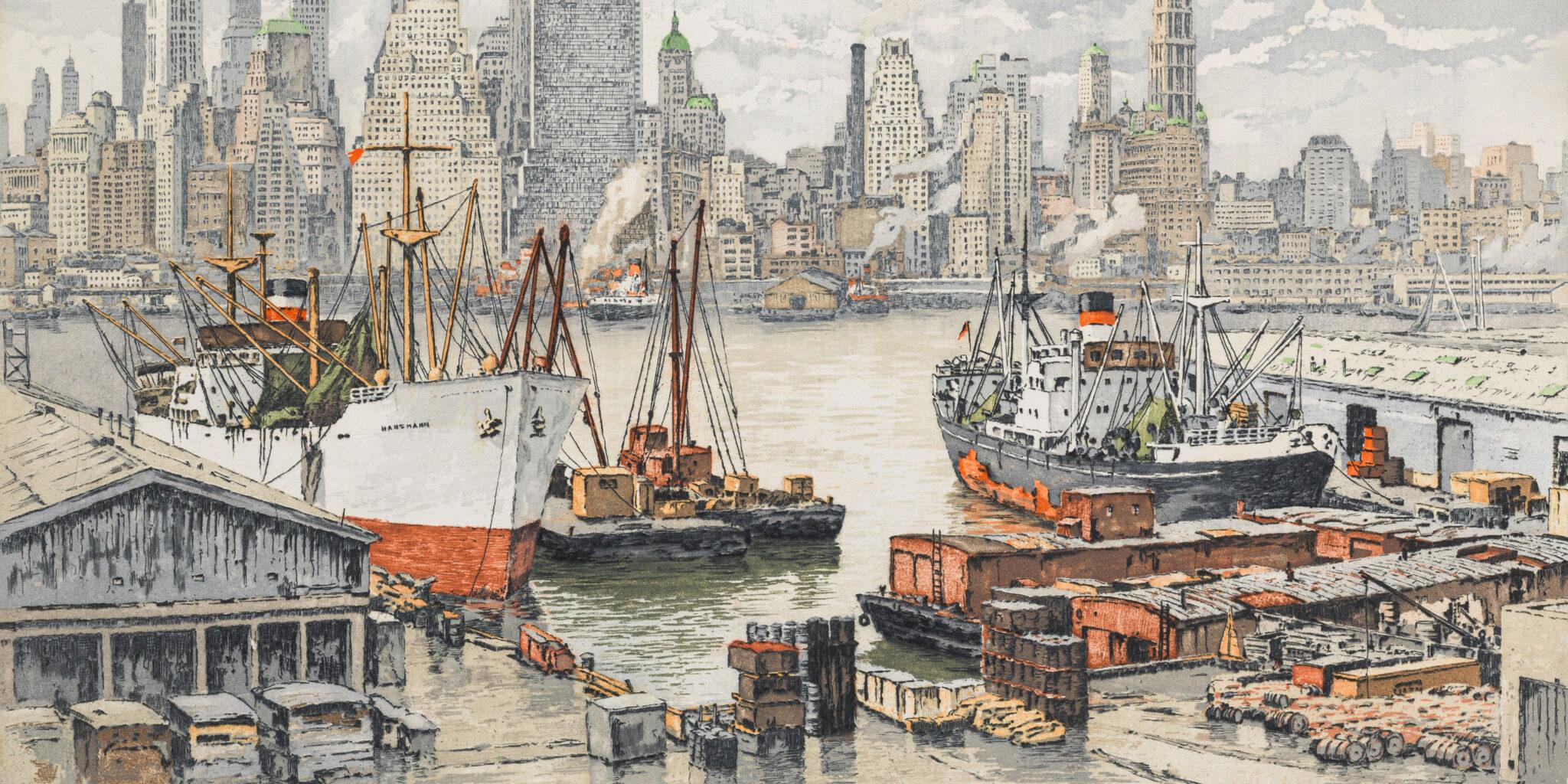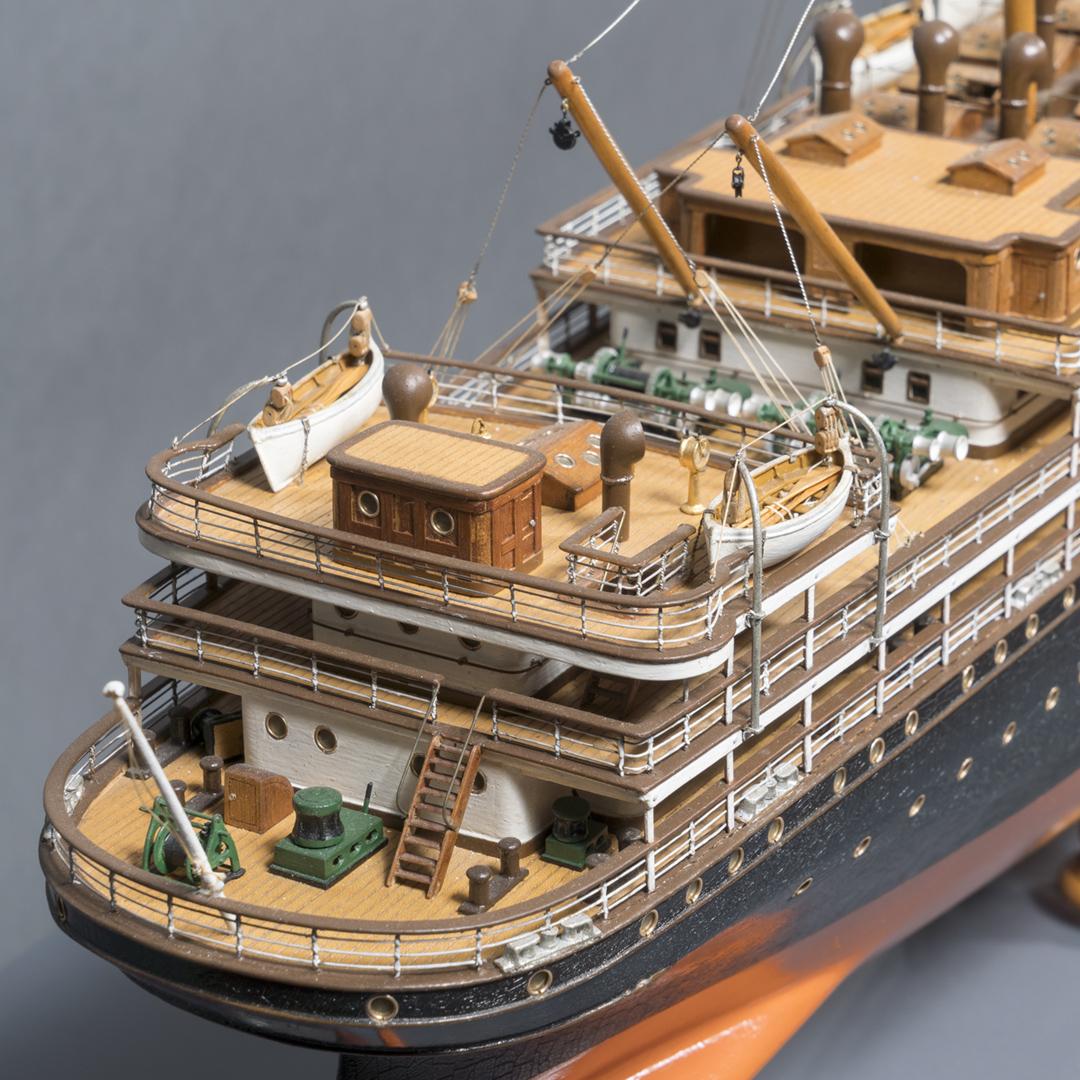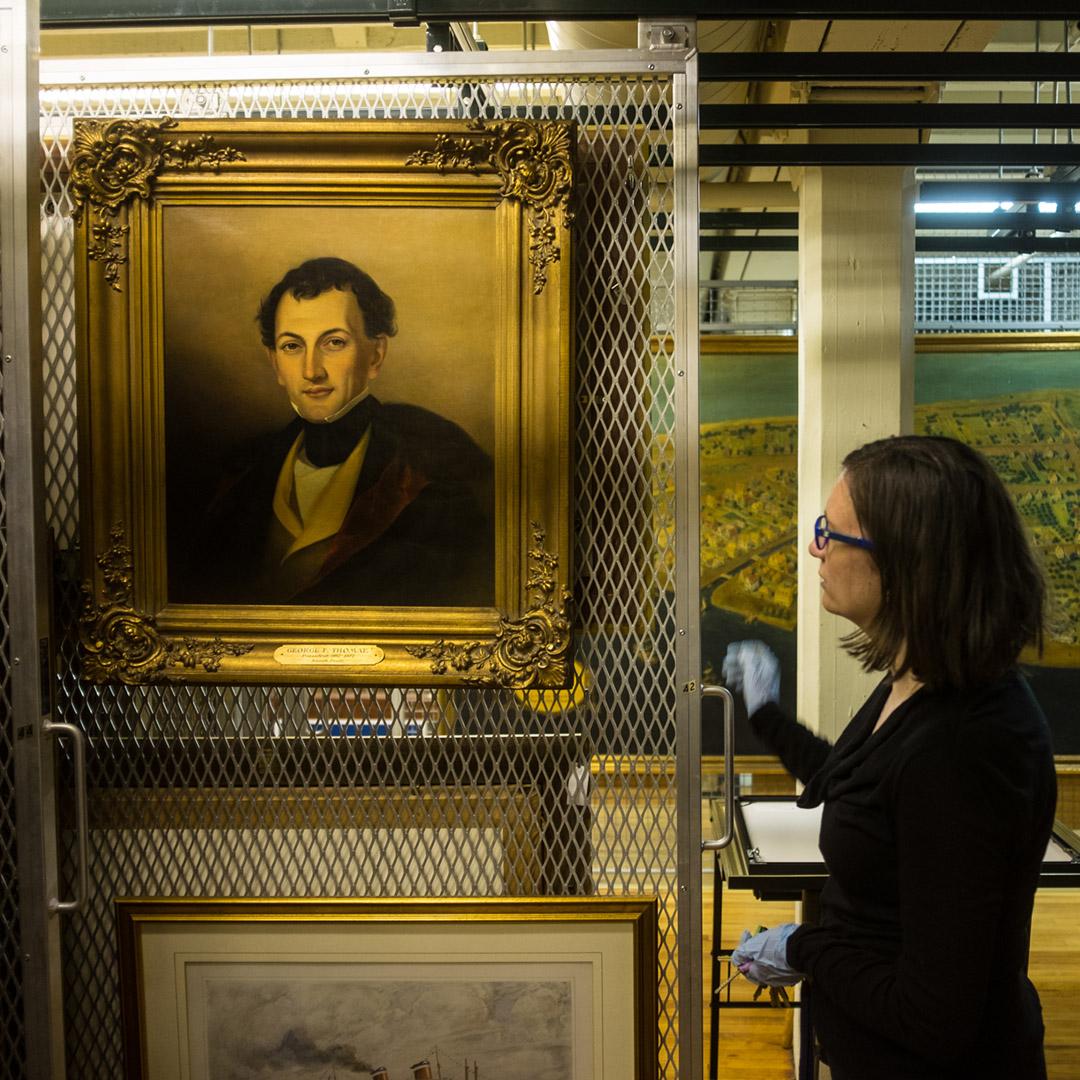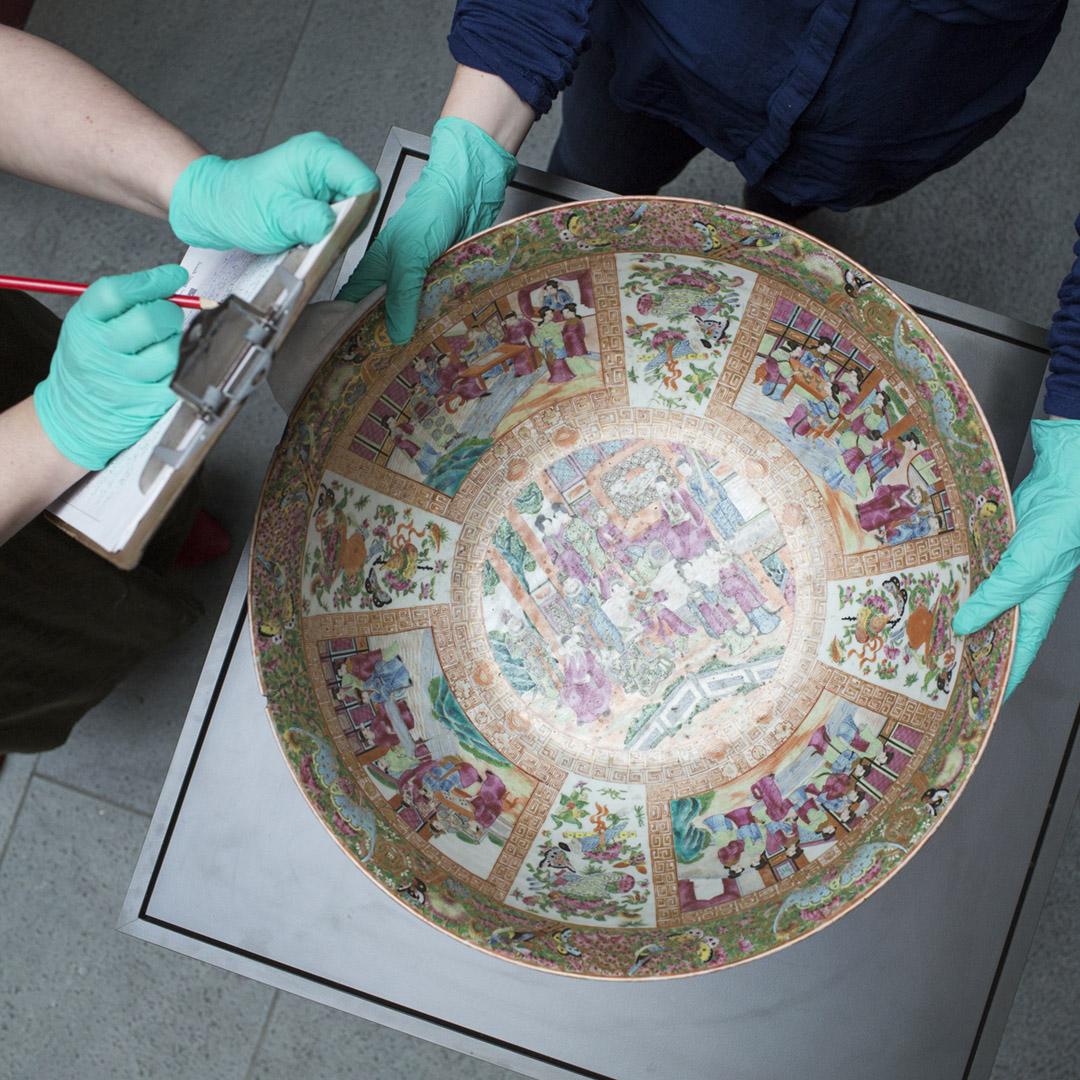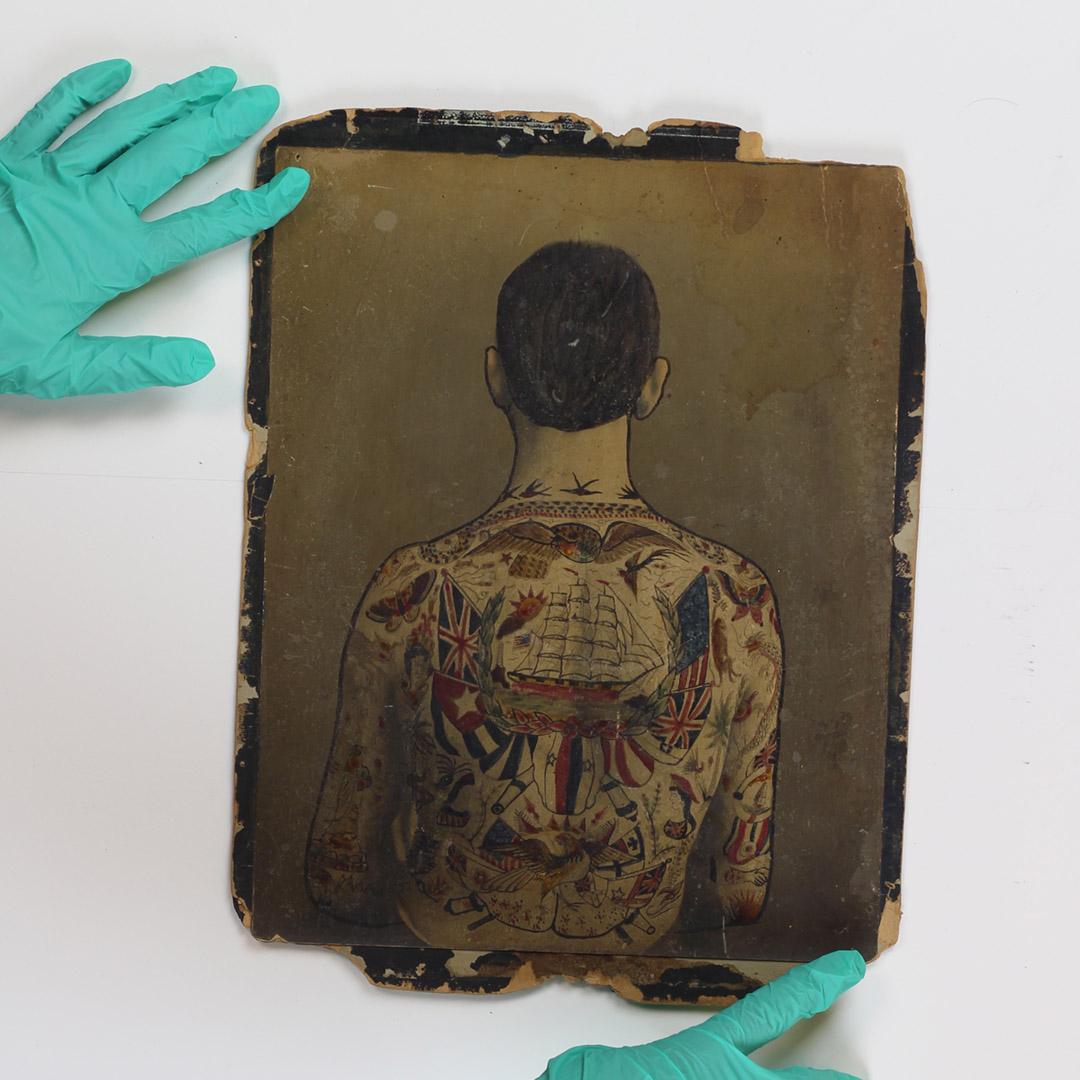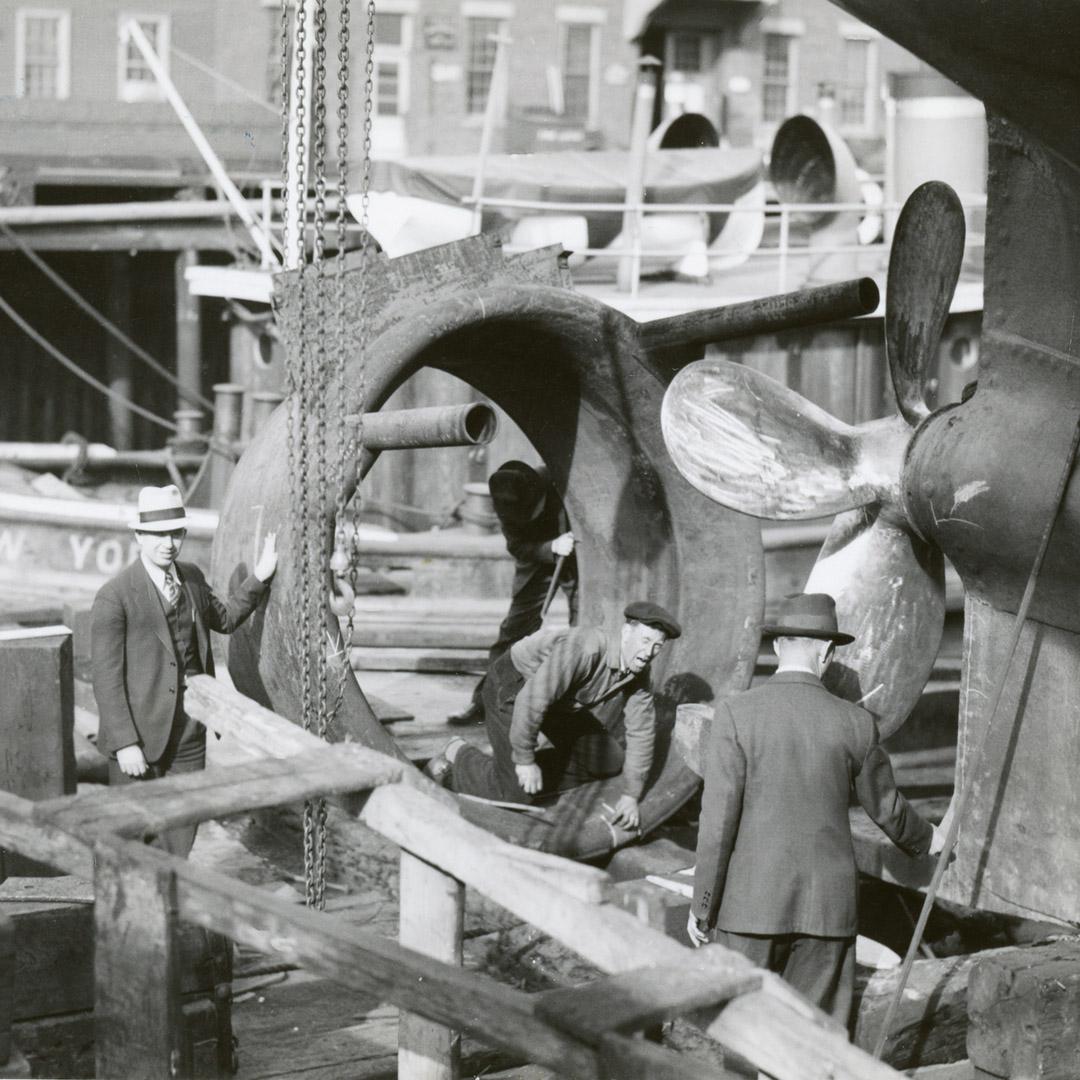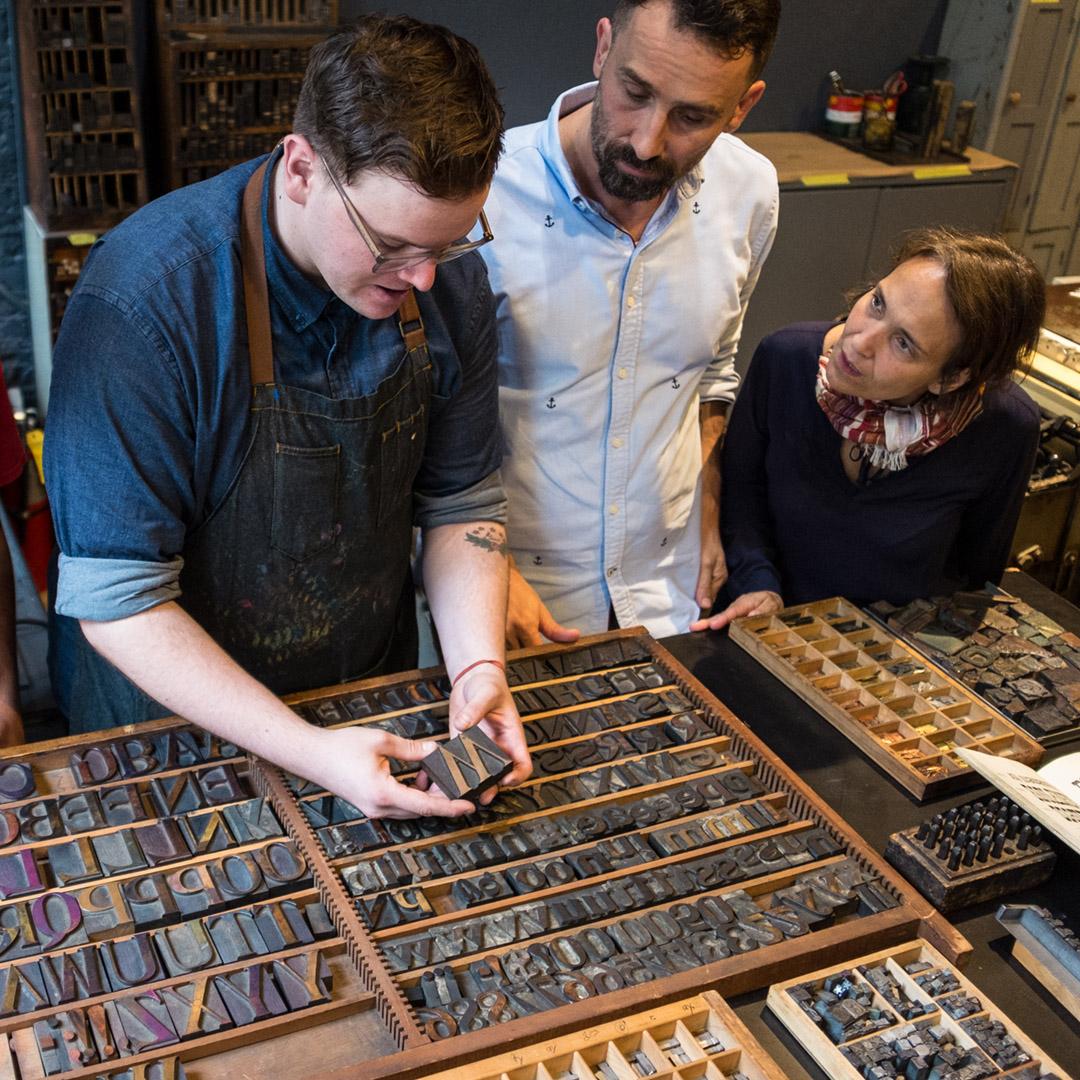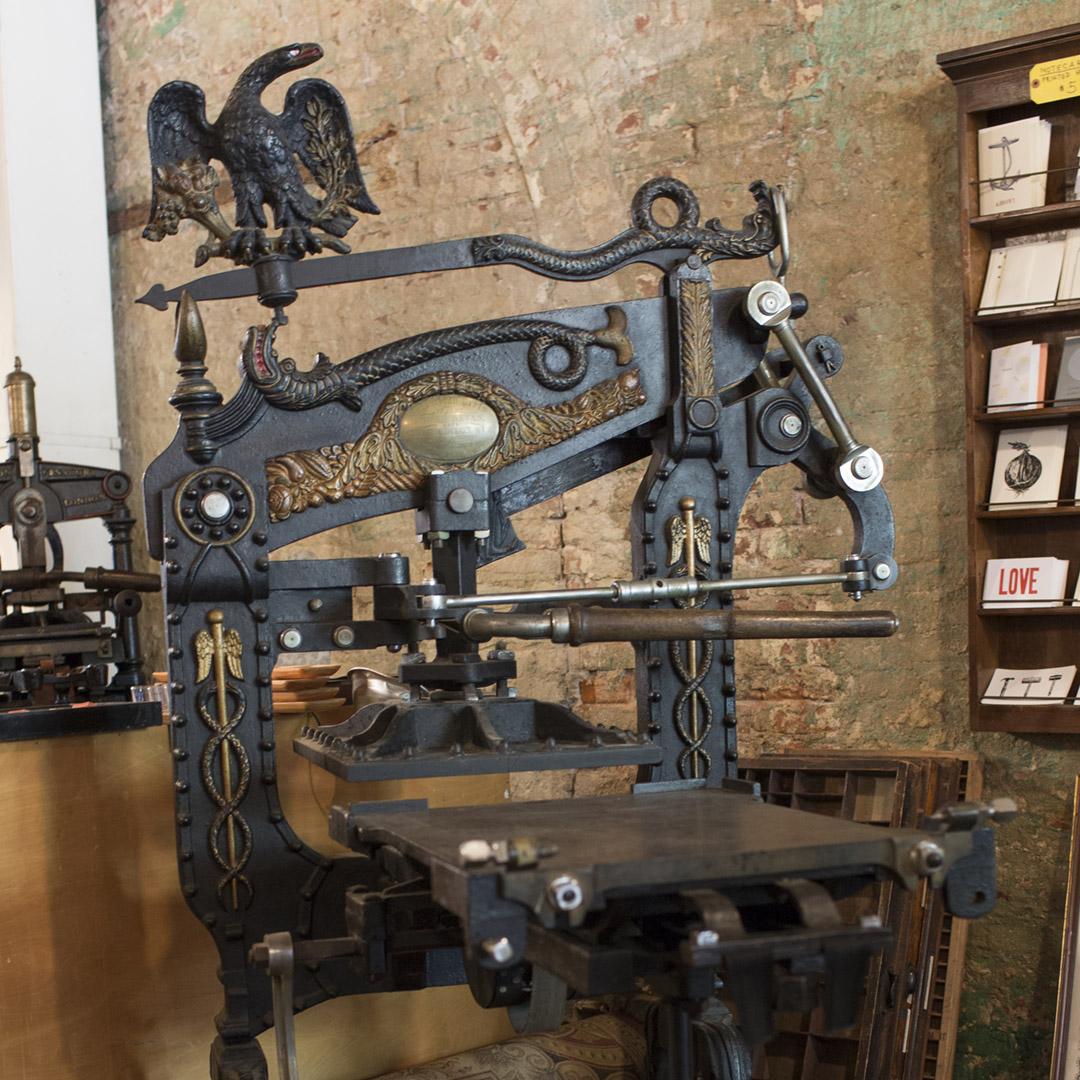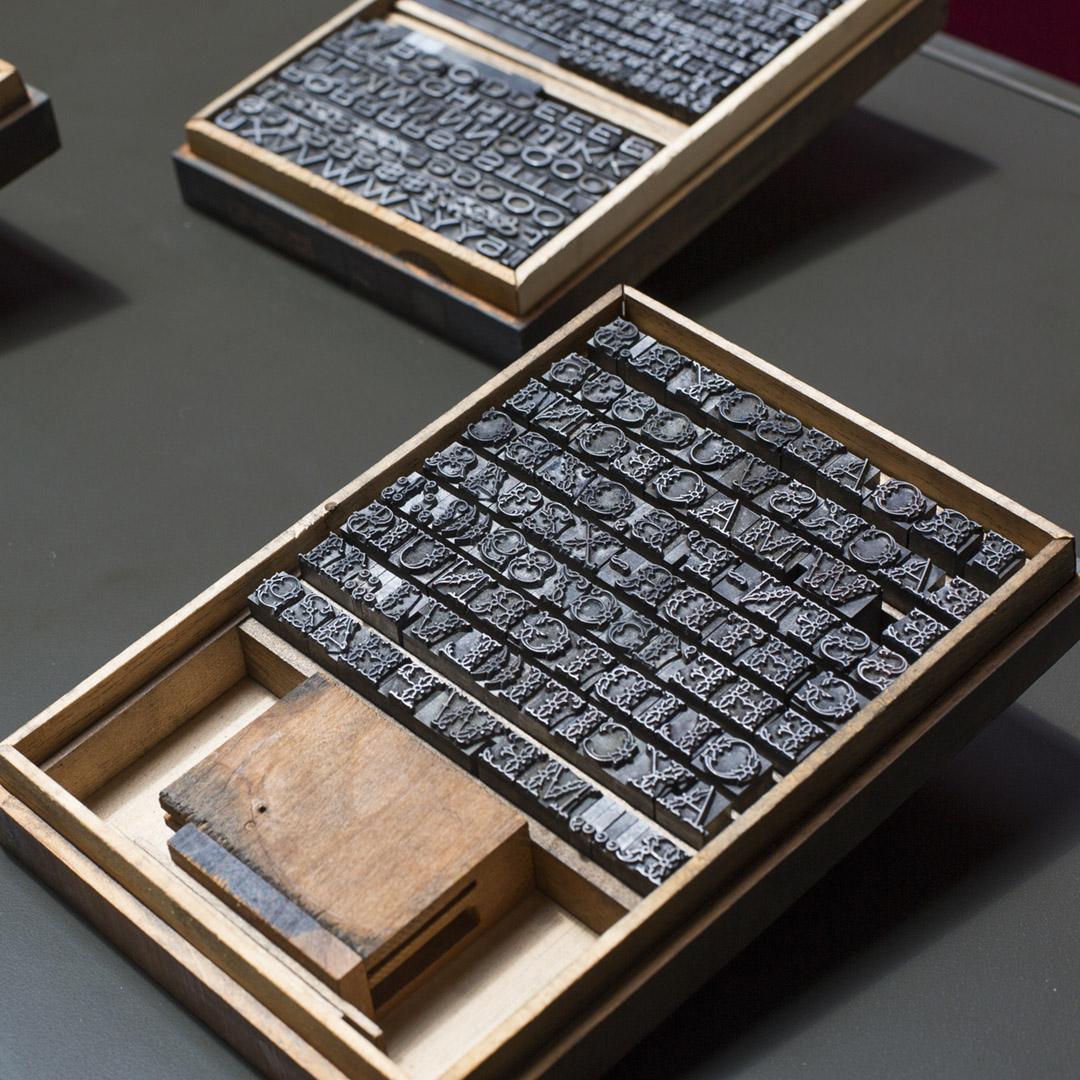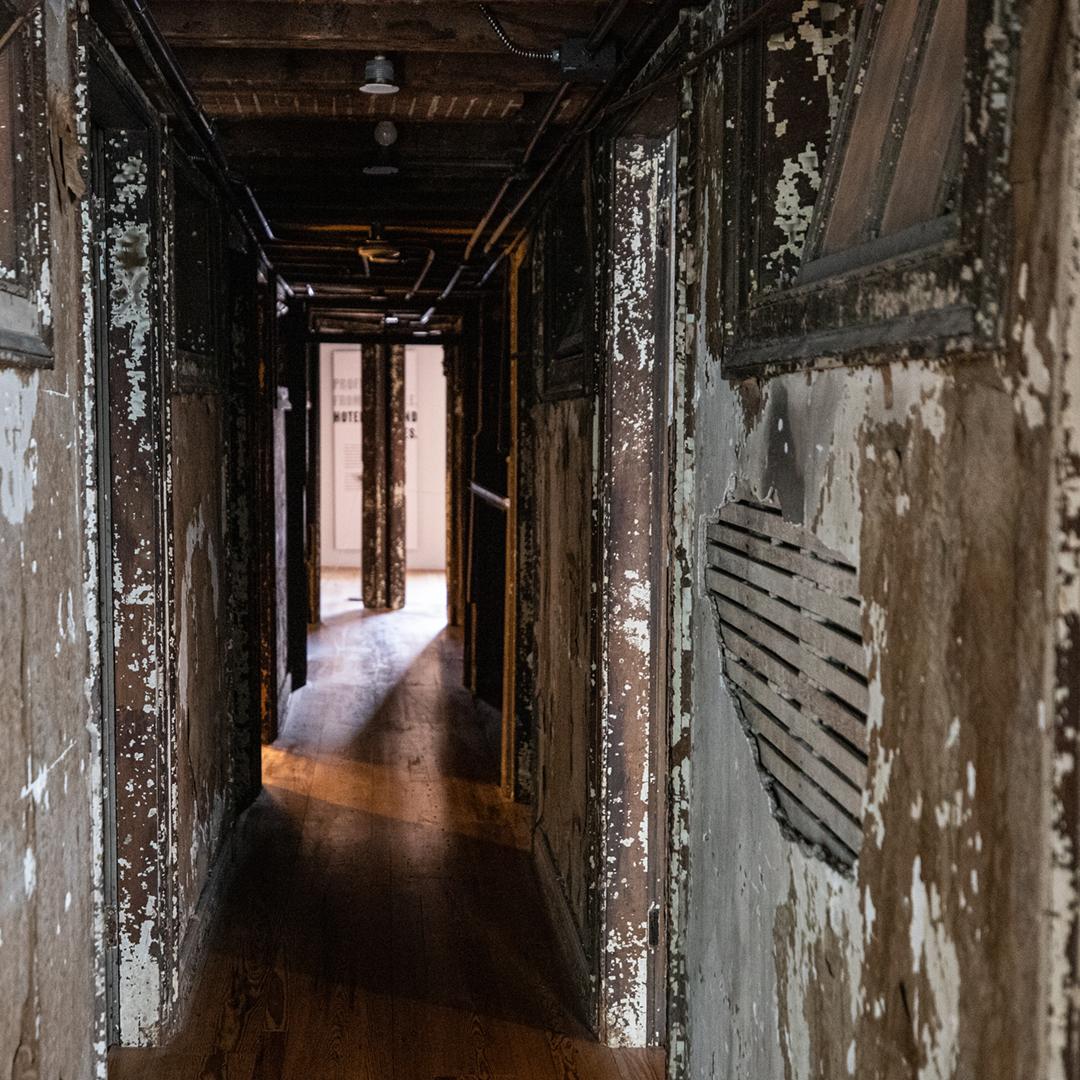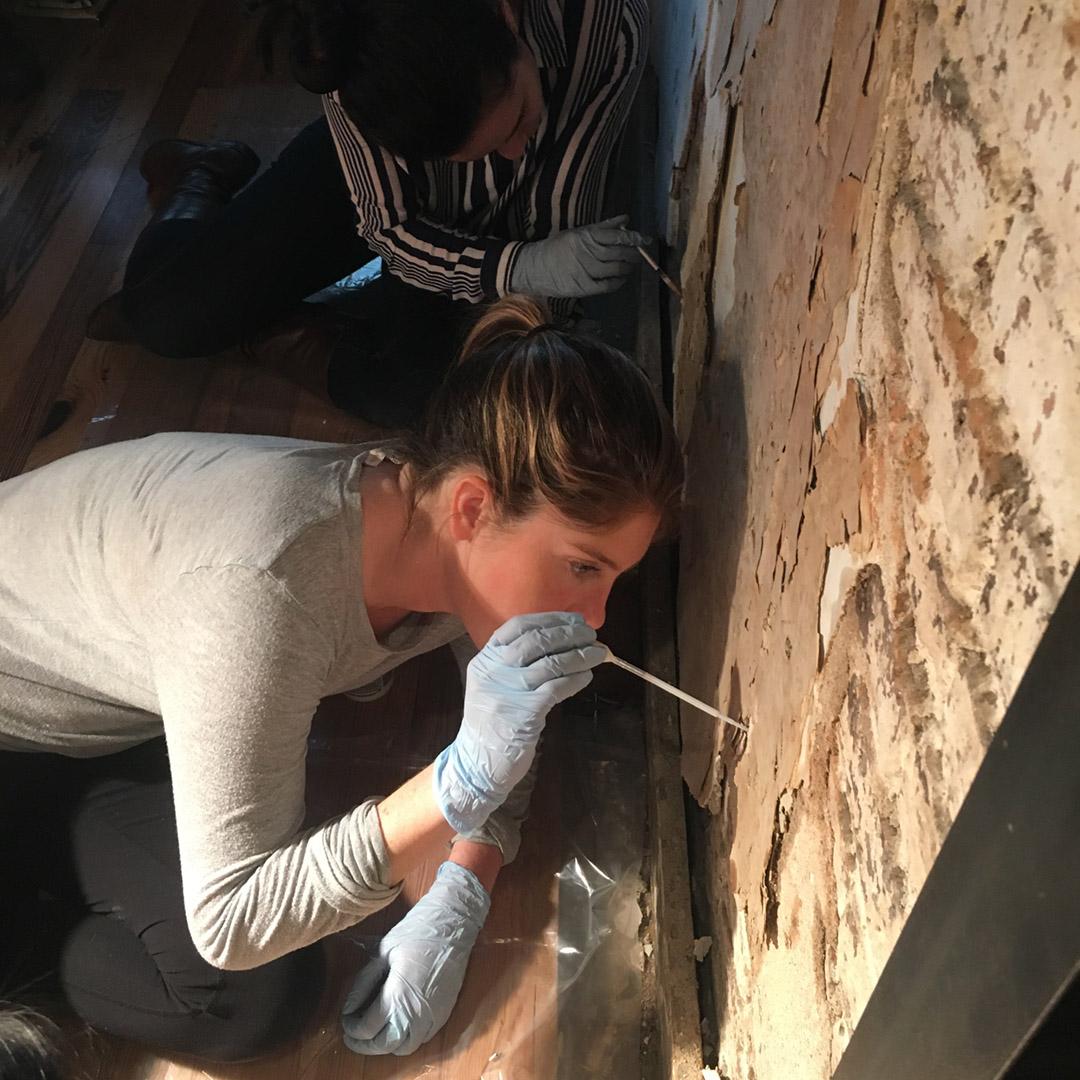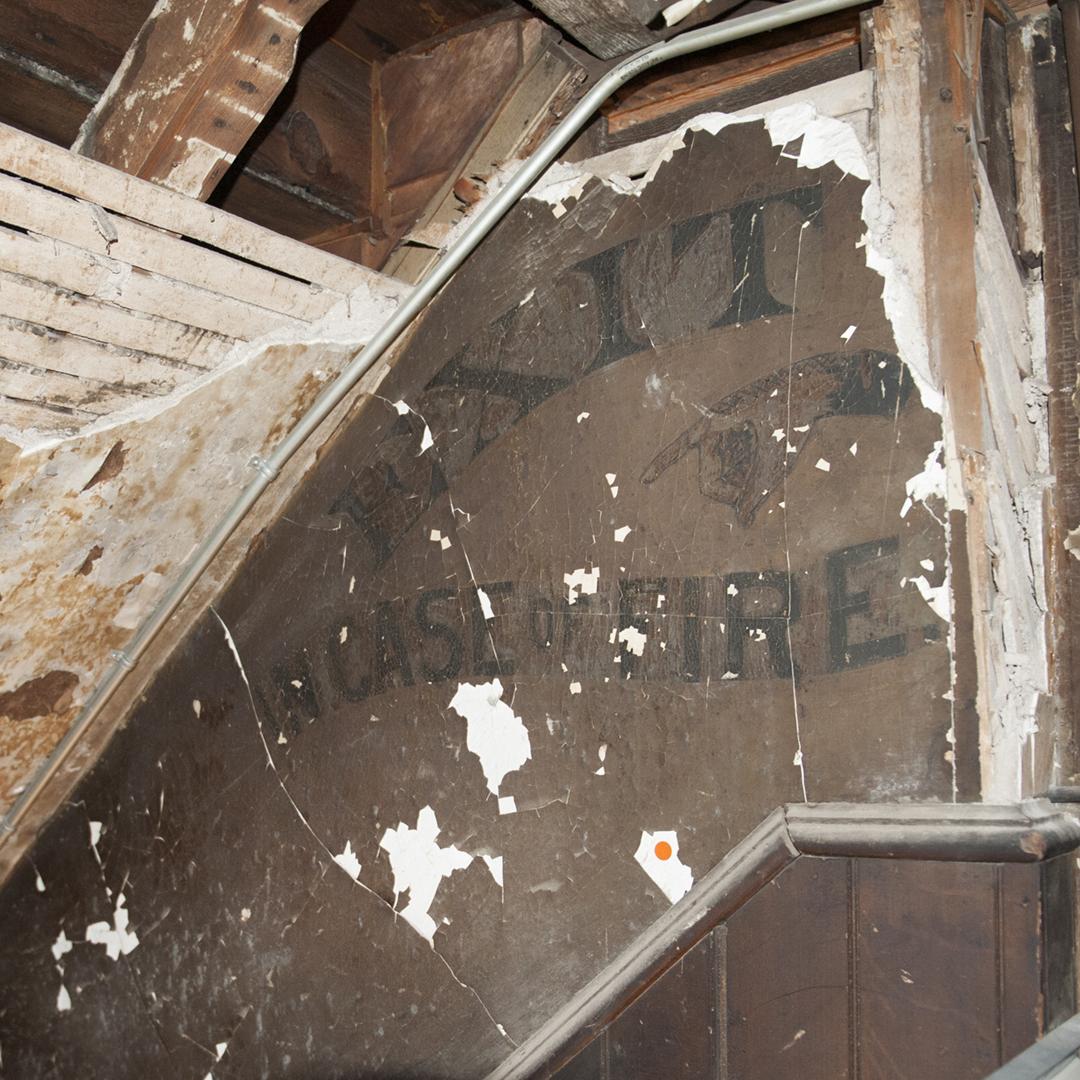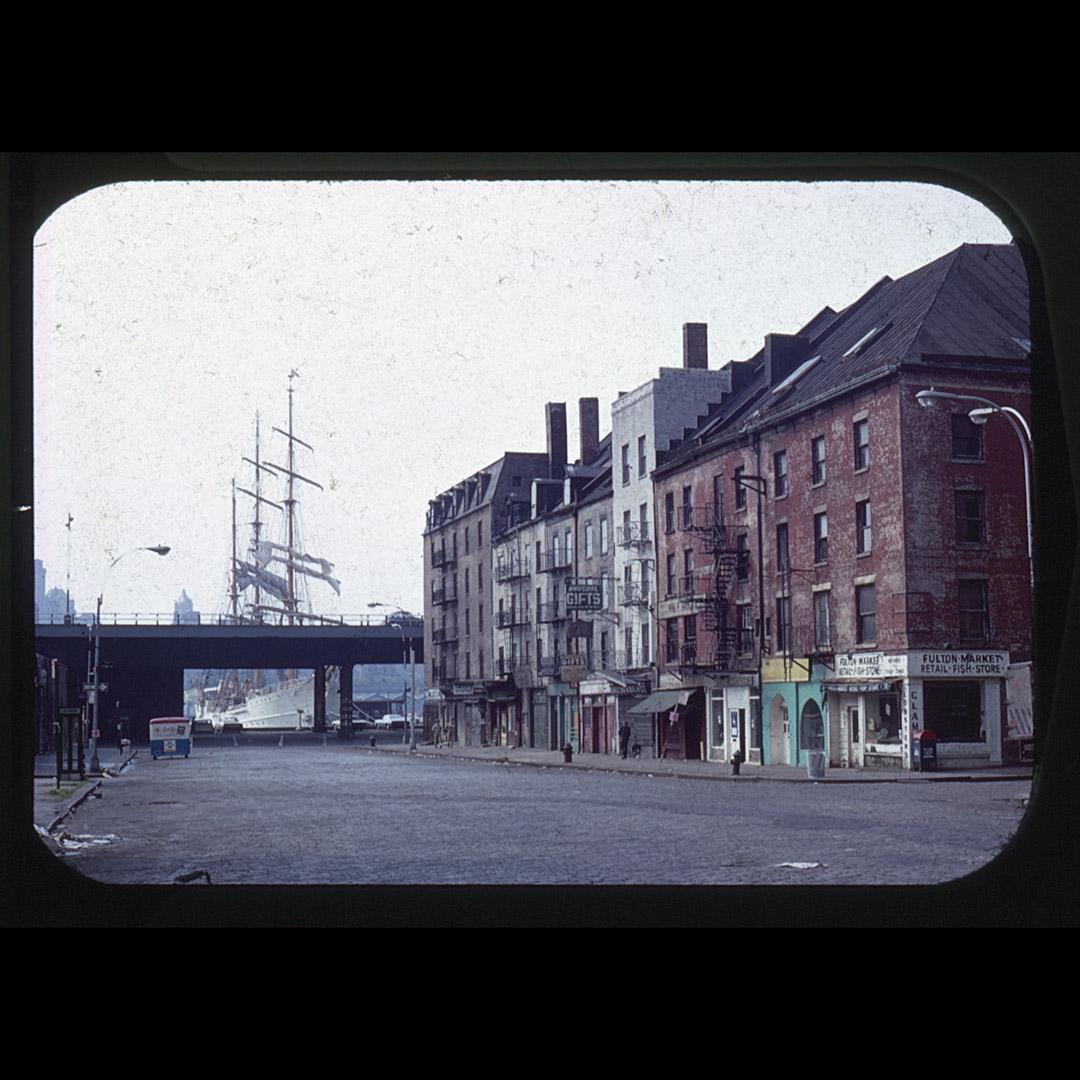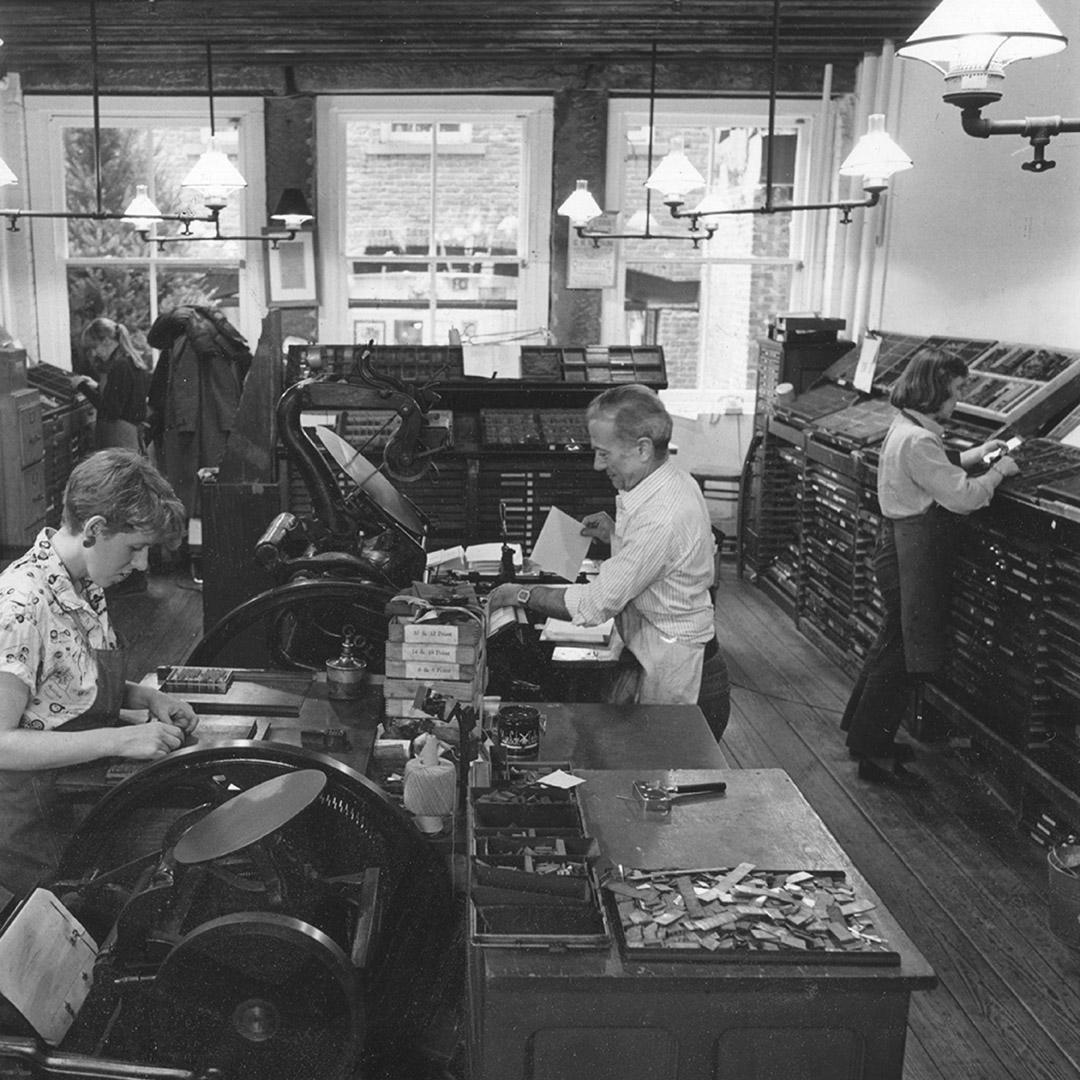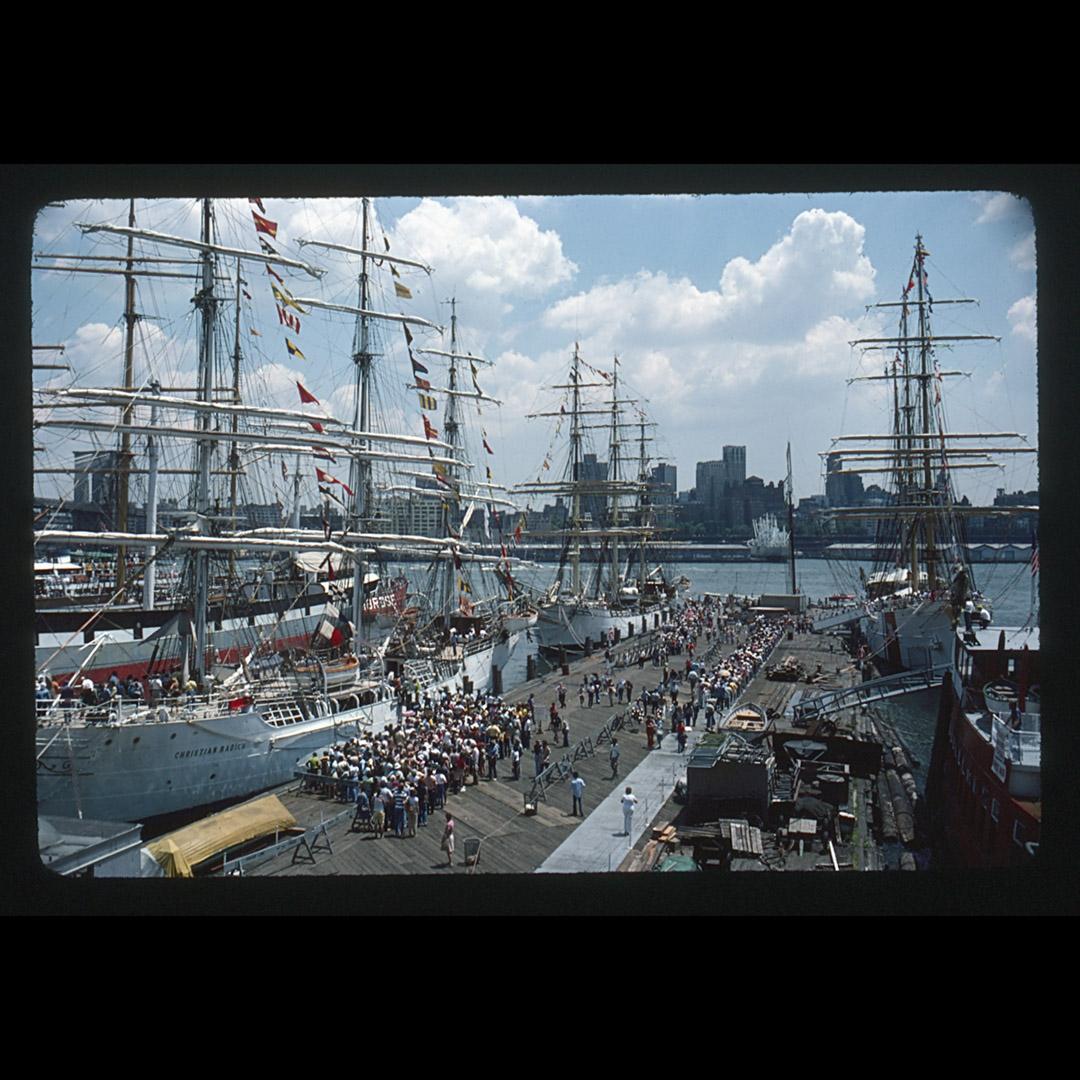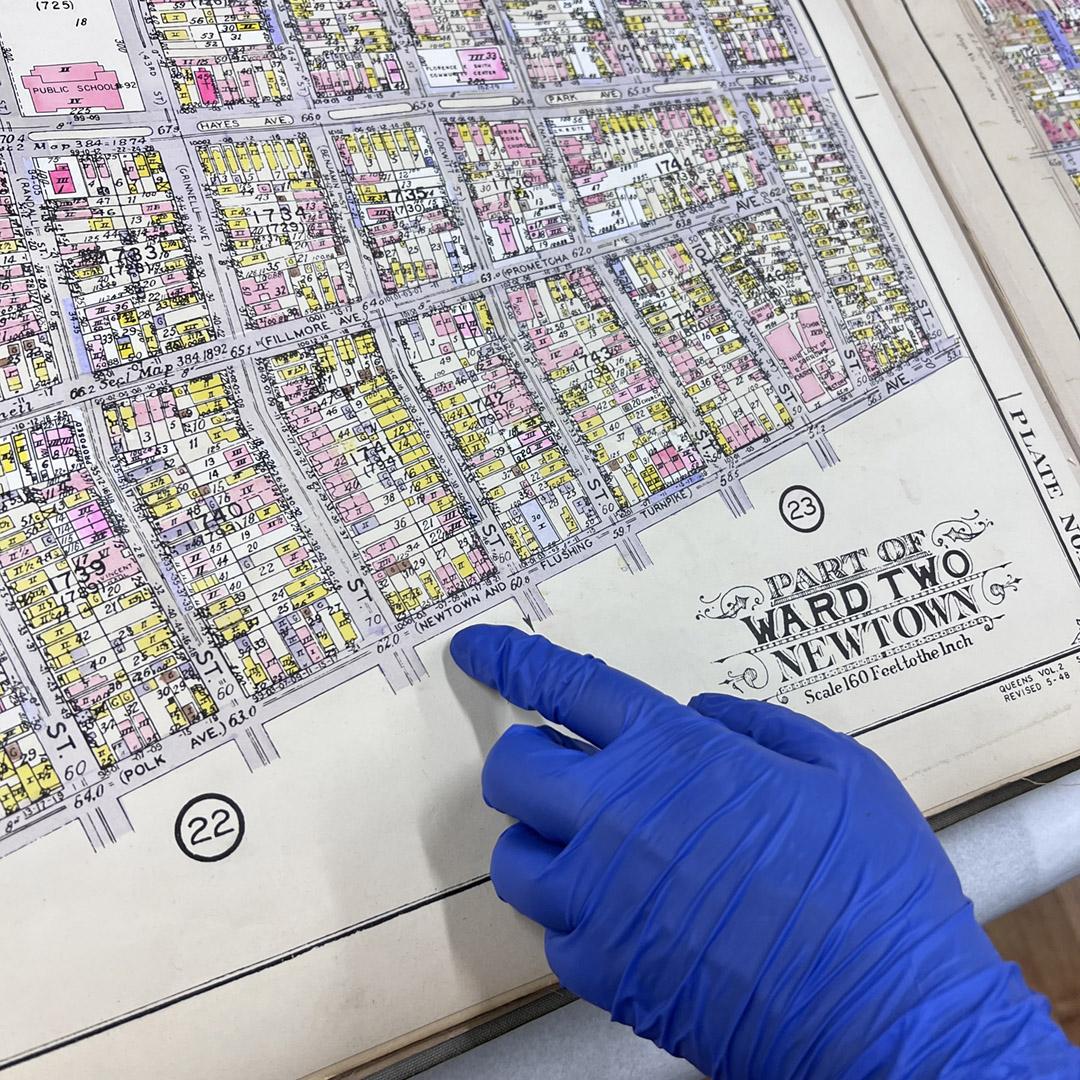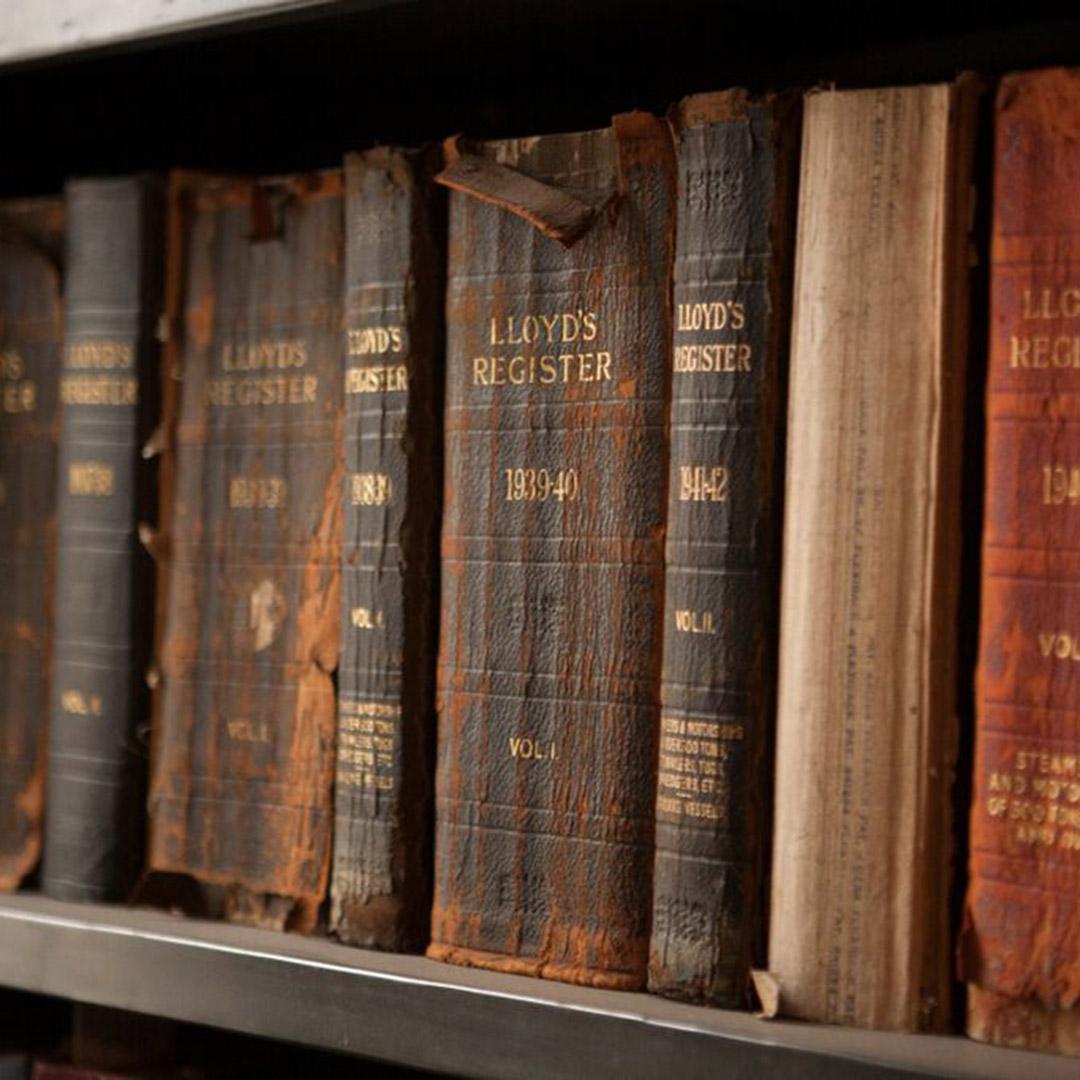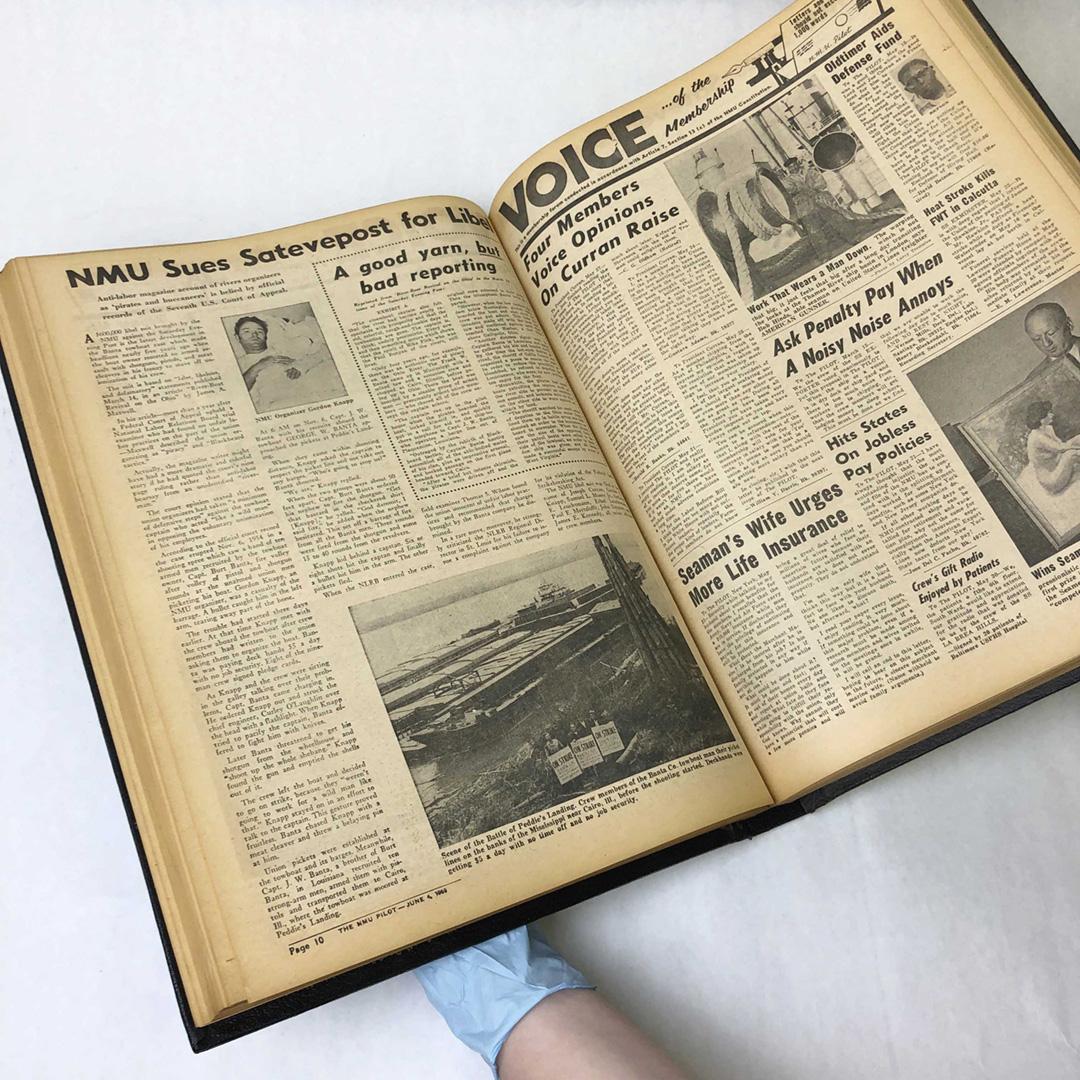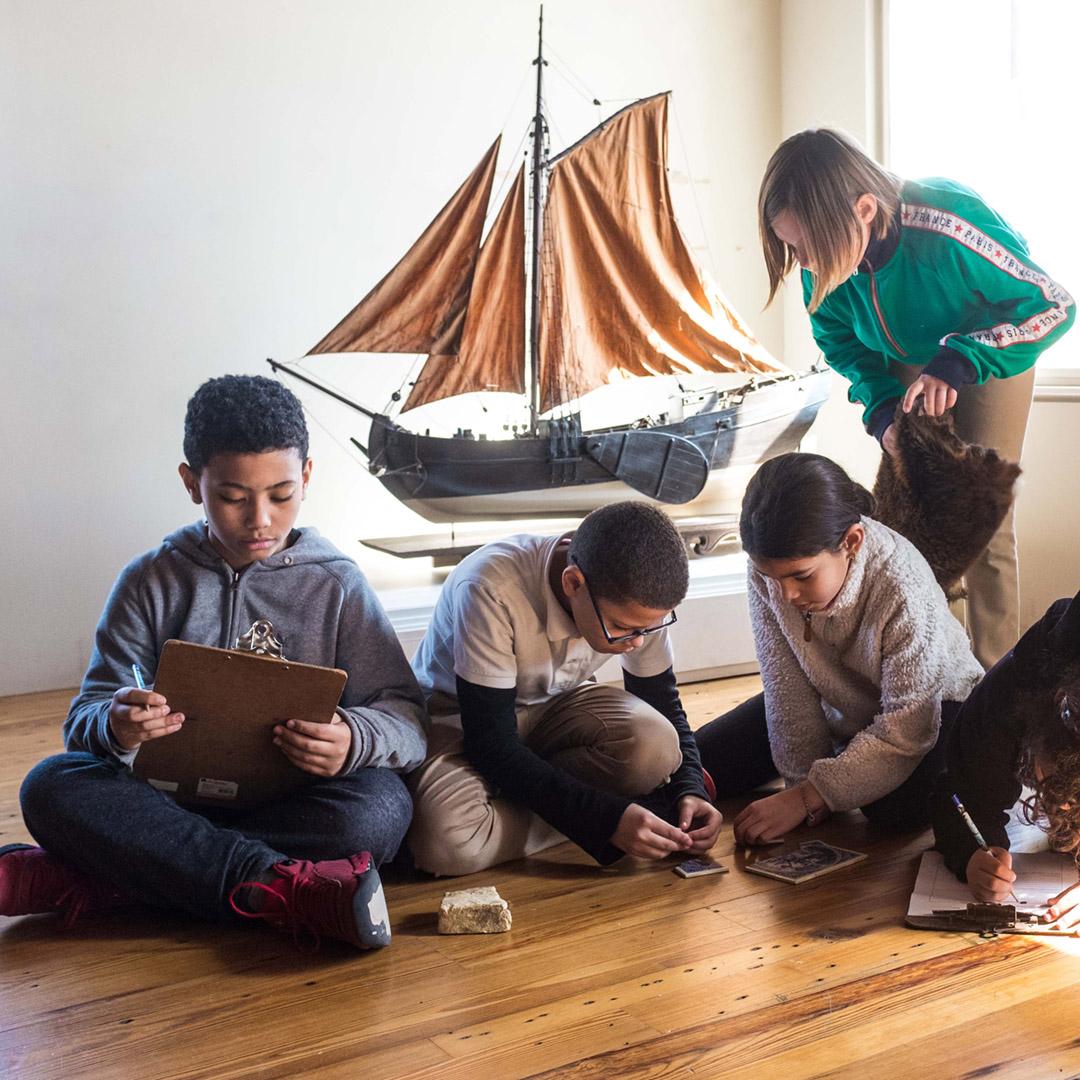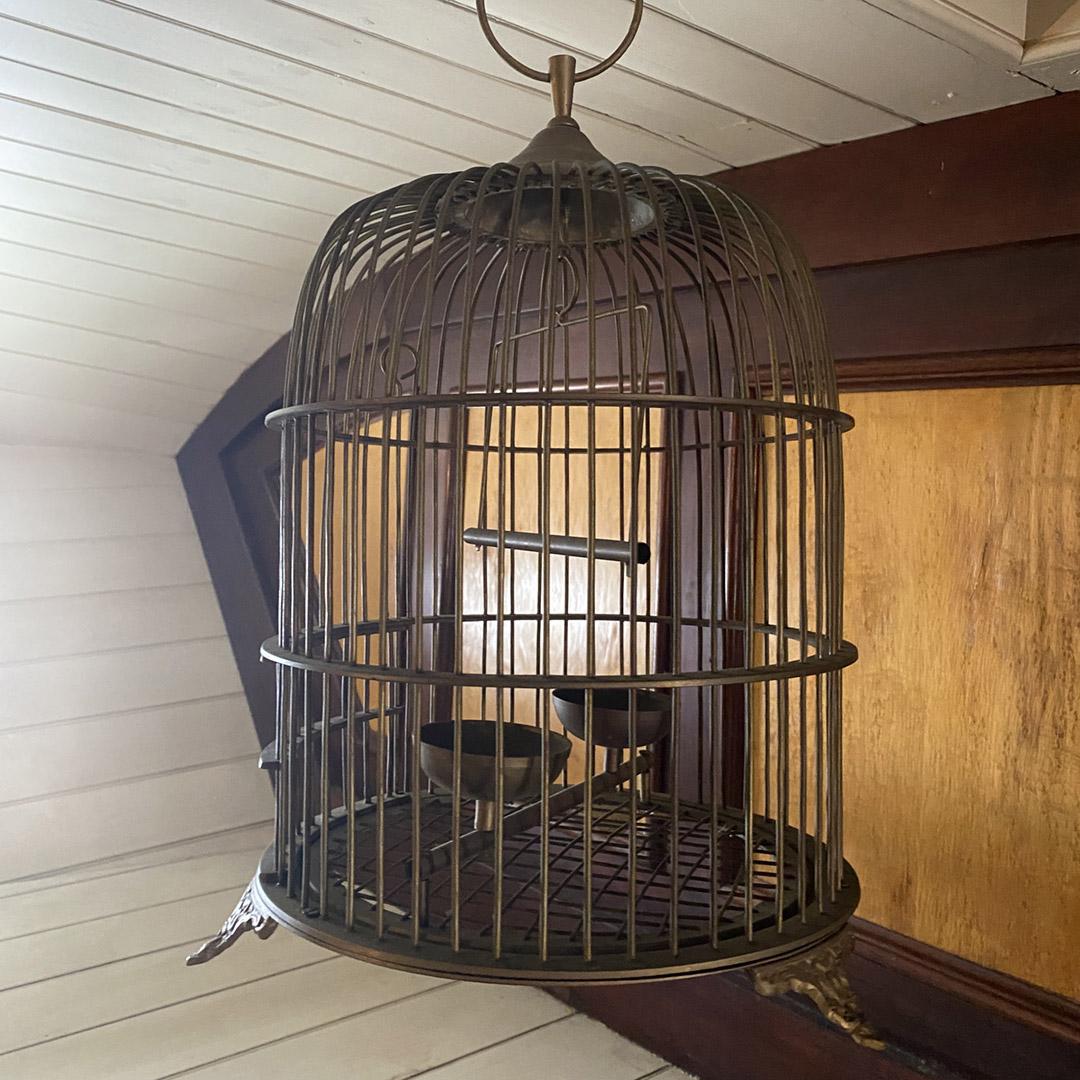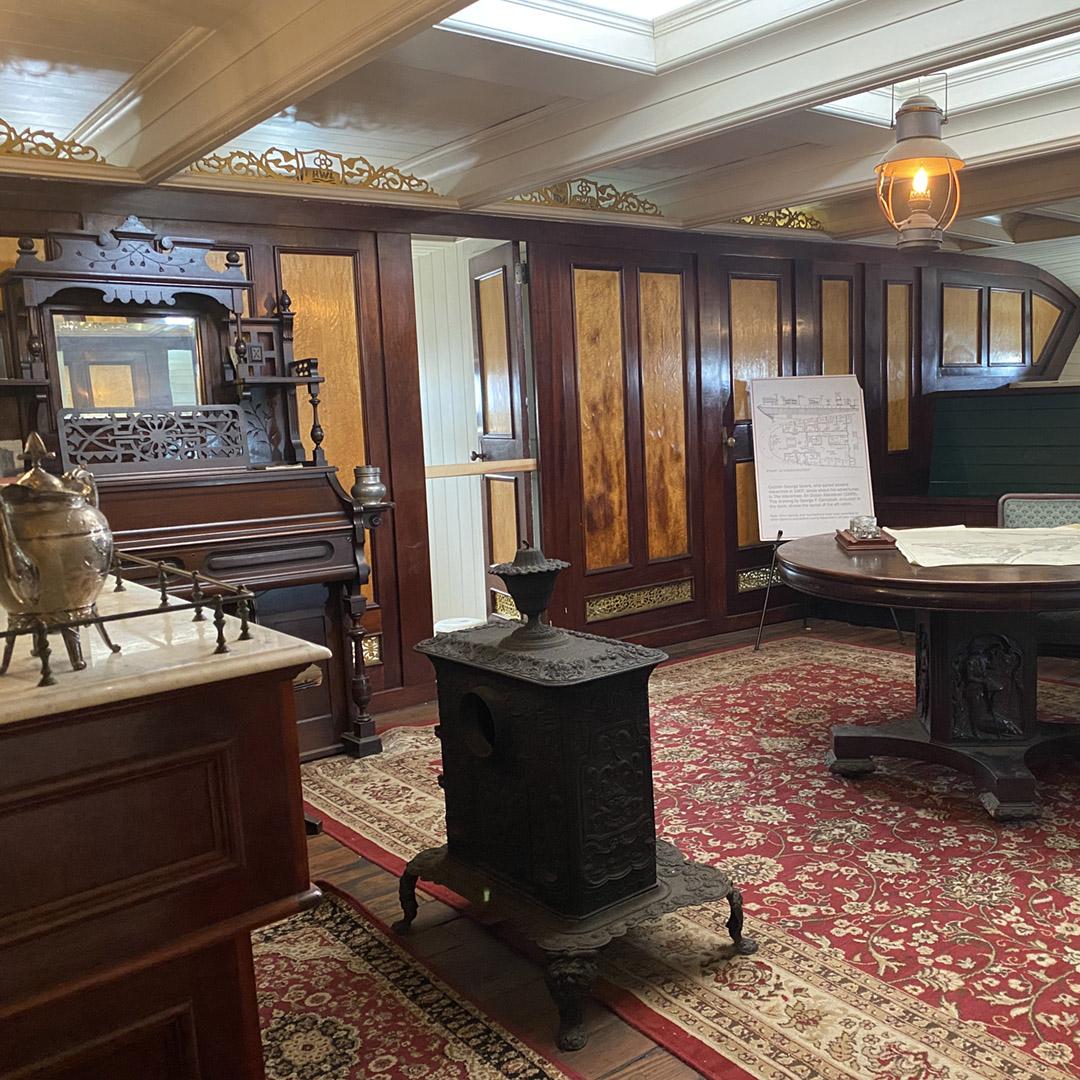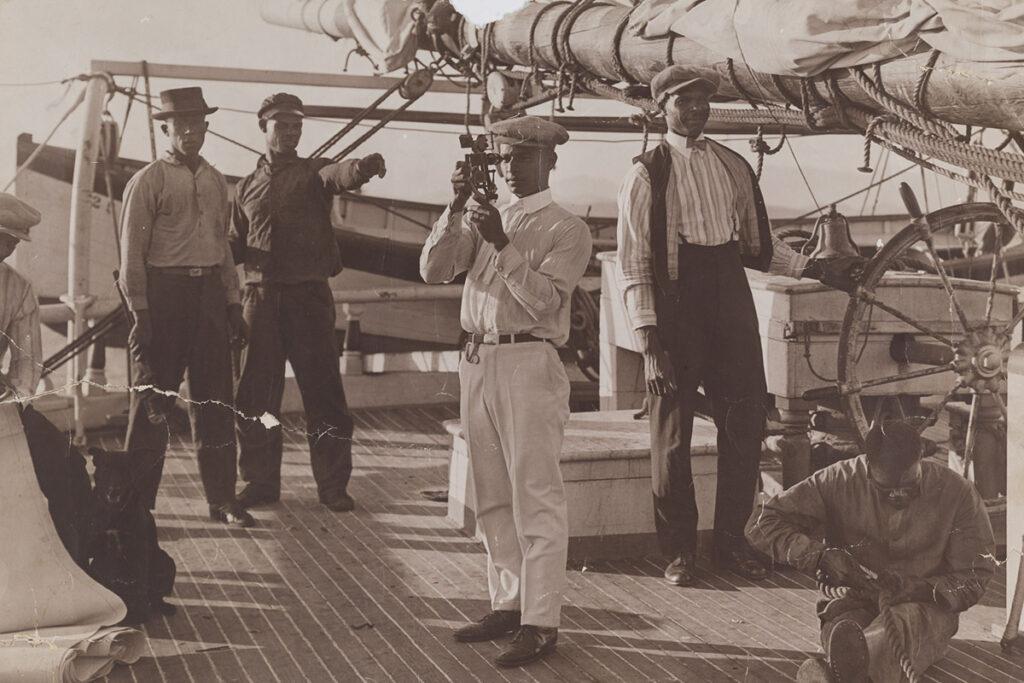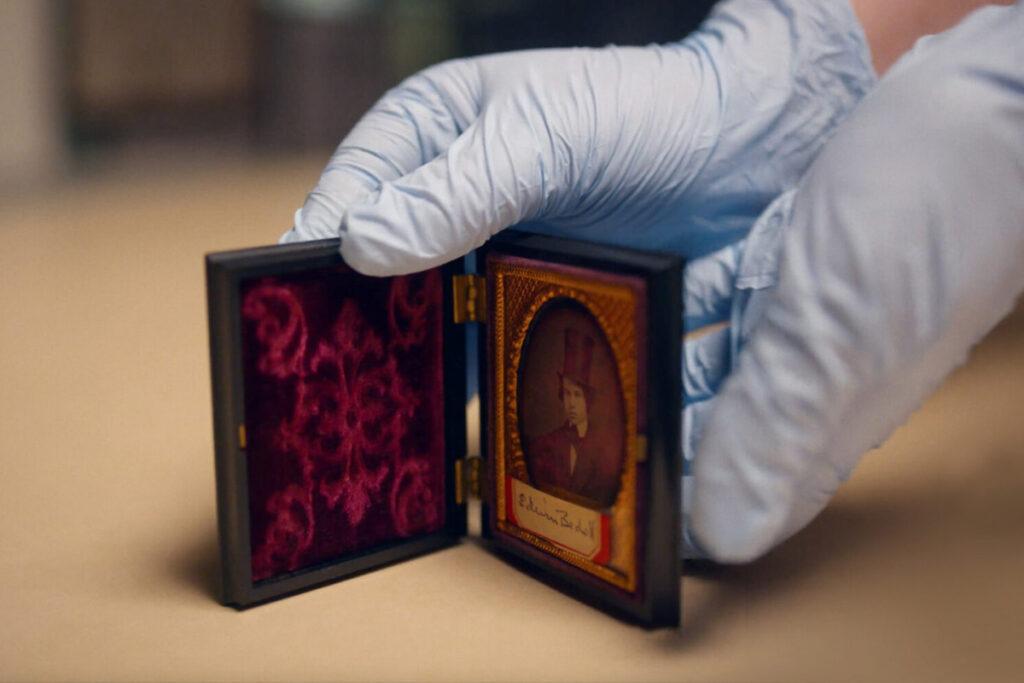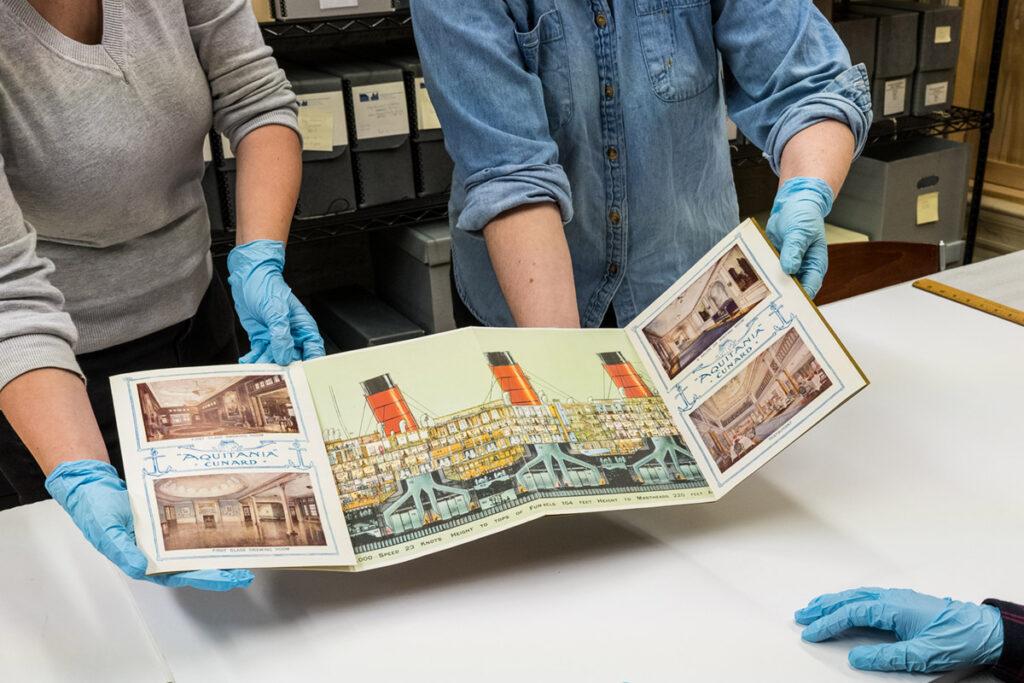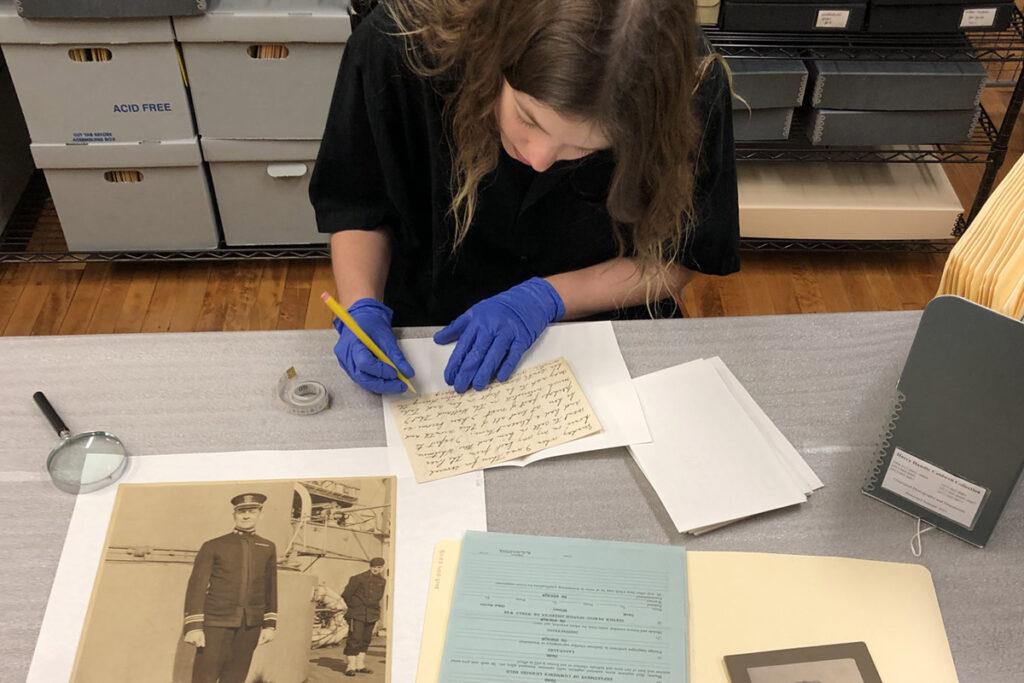The collections and archives of the South Street Seaport Museum document the rise of New York as a port city, and its role in the development of the economy and business of the United States through social and architectural landscapes through over 28,000 works of art and historical artifacts, and over 80,000 archival materials.
The Museum collects objects and historic records for the purpose of documenting the commerce, work, and people that have contributed to the history of New York City’s world port. In addition, holdings include items related to the environment and physical structure of New York Harbor, including its waterways, historic sites, shipyards, and piers. The Museum also collects artifacts that promote representation and tell stories of the people and the vessels that have connected New York to the rest of the world.
Holdings reflect the legacy of many generous donors, some of whom contributed substantial collections. These donations help the Museum tell a broader range of stories about interaction with the sea, both globally and through time. Through the collections, the Museum strives to embrace a global perspective on the maritime experience through historical and contemporary works that express the universal significance and symbolism of the sea.
The collections are accessible to the wider public through exhibitions, educational programs, and hands-on activities using the working and teaching collections. Over the last few years, the Museum has launched many online initiatives, including virtual tours and digital programming; increased social media presence; the Collections Chronicles, a blog that provides deeper context into some of the most fascinating objects in our collection, their inventory and care; and a free Collections Online Portal, an ever-growing searchable database populated with objects covering a variety of mediums and subjects from the permanent, archival, and working collections.
To better define use, purpose, and care of the artifacts, objects are organized into smaller specific groupings that come together to make the full collection of the South Street Seaport Museum.
Types of Collections and Archives
Permanent Collection
This collection includes works of art and historical artifacts primarily used for exhibitions and research. These include fine art such as paintings, drawings and watercolors, and prints and lithographs spanning from the 18th–20th centuries depicting New York City’s waterfront and landmarks, renowned vessels, the American Civil War, topics from popular culture, and marine subjects from around the world.
A large collection of navigational instruments, used by sailors to monitor their environment and their vessels, along with thousands of historic and antique tools used for shipyard and port work by workers and riggers. Ship parts and equipment, scale ship models and scrimshaw capturing the distinctive creative spirit and emotional impulses generated by seafaring experiences of the 19th and 20th centuries, and various historic objects related to trade from and to New York and the seaport district itself, including those from the Fulton Fish Market, the coffee and tea industry, as well as archaeological artifacts and architectural elements from historic buildings, shipyards and warehouses, and letterpress printing, graphic art, and advertising industry, which supported the growth of New York as a financial powerhouse.
Lastly, a few artifacts from the Seaport Museum’s permanent collection can also be seen throughout the South Street Seaport Historic District. On Water Street, the Titanic Memorial Lighthouse, currently under renovation, is a beacon at the entrance of the neighborhood, while the two large anchors displayed on Little Water Street, in front of the Museum’s Bowne & Co., Stationers, are a testament of the infrastructure work that happened in the City in the early 1970s.
Collections Chronicles Blog Post About this Collection
“Recent Acquisition: 1860s-1880s Ink and Mucilage Bottles” by Martina Caruso, June 11, 2020.
“Anchors of the Seaport” by Martina Caruso, January 28, 2021.
“Feeling Sea Sick. Maladies and Medicine on 19th Century Whaling Ships” by Carley Roche, July 27, 2023.
“Flying Colors. Discover the Museum’s Flag Collection and How We Care for It” by Martina Caruso, October 26, 2023.
‘Shining a Light on a Unique Public Artifact” by Martina Caruso, April 1, 2024.
“Tools of the Trade” by Carley Roche, February 22, 2024.
“The Works on Paper of Robert Warner” by Martina Caruso and Rob Wilson, August 29, 2024.
Archival and Special Collections
Within this collection are different materials with a similar 18th–21st centuries span, augmenting and complementing other elements of the Seaport Museum’s permanent collection. Artifacts within this collection are primarily all mostly used for exhibitions and research purposes.
They include everyday paper-based objects such as invoices, newspaper clippings, postcards, trade cards, menus, programs, tickets, broadsides, music sheets, and advertisements, as well as tattoo art, collages, vintage toys and games.
Two highlights include the Museum’s Photography Collection which assists us to tell the story of photography across three centuries, from a crystal porcelain-type dated ca. 1873–1876 depicting Mr. Edmund Seaman (1832–1888) when he was the Captain of the Port of New York, to 2021 inkjet photographic prints by Shinnecock National artist Jeremy Dennis (b. 1991); and a Rare Book Collection, comprising of ~1,500 books published prior to 1900, covering subjects tied to the history of the Port of New York, its trade and commerce, ship construction and design, maritime navigation and seafaring, traveling subjects, as well as printing, graphic art, art history and literature of the sea topics.
Collections Chronicles Blog Post About this Collection
“Hidden Gems: Clipper Ship Cards” by Michelle Kennedy, June 25, 2020.
“Recent Acquisition: Aerial Photographs from Fairchild Aerial Surveys, Inc.” by Martina Caruso, August 20, 2020.
“Yesterday’s Specials. An overview of menus from passenger ships 1860s to 1960s” by Michelle Kennedy, November 12, 2020.
“Hidden Gems: Glass Plates Negatives” by Martina Caruso, November 11, 2021.
“Sailors and Their Books” by Michelle Kennedy, March 21, 2022.
“Extra! Extra! Read all about it! Newspaper Clippings Now on the Collections Online Portal” by Martina Caruso, June 29, 2023.
“Archival Detective Work. The research and process of the Captain Frank Ley Collection” by Elena Abou Mrad, July 19, 2024.
“Cursive Conundrums” by Elena Abou Mrad and Nick Lockyer, November 14, 2024.
Working Collection
The Museum’s working collection includes ship parts and gear on board the tall ship Wavertree, and more than a dozen mid-19th to mid-20th century printing presses, alongside one of the largest collections of antique moveable type in the country housed in the Bowne & Co. printing offices.
The nature of select items within the collection requires that they be operated by trained staff in order to better preserve them. The staff in the Waterfront Department and at Bowne & Co. care for the working collection in collaboration with the Collections and Exhibition Department.
By regularly using these items, the Museum is not only preserving the objects but is also fostering the preservation of related traditional industry skills. The working collection is primarily used for educational and programmatic purposes.
Collections Chronicles Blog Post About this Collection
“One Printing Press and Three Museums” by Rob Wilson and Martina Caruso, June 10, 2021.
“Modern Broadside Printing at Bowne & Co.” by Christine Picone, October 22, 2020.
Remains of the Old Hotels inside Schermerhorn Row
The remains of the old hotels inside Schermerhorn Row, which includes a corridor of rooms from the Rogers’ Hotel and Dining Saloon and the remains of the Fulton Ferry Hotel’s laundry room and shaft, are an unusual addition to the Museum’s collection.
The Rogers’ Hotel and Dining Saloon opened in 1850 at 4 Fulton Street, as a typical 19th century waterfront refectory and saloon. In 1864, management was passed to Abraham Sweet, who ran (with additional generations of his family) Sweet’s hotel and restaurant until 1992, expanding it to 6 Fulton Street.
The Fulton Ferry Hotel at 92-93 South Street was named so in 1875 when Friederick and Henry Lemmermann bought the Mackinley Hotel that occupied the same address prior. The hotel stayed in business until ca. 1935.
Collections Chronicles Blog Post About this Collection
“Housekeeping in a 150 years old Hotel” by Martina Caruso, July 9, 2020.
Institutional Archive
Materials within this collection include Museum publications, printed ephemera, awards, photographs and slides, oral history recordings and films, and important correspondences tied to the Museum’s history, personalities, collections, ships, buildings, and programs. A large selection of the archive covers the creation of the South Street Seaport Museum in 1967, and the Landmarks Preservation Commission designation of the South Street Seaport Historic District in 1977.
Highlights include the full run of the Museum’s South Street Reporter and Seaport magazine (1967–2010) and a large photo archive depicting the Museum’s ships, buildings, and activities.
Collections Chronicles Blog Post About this Collection
“Seaport Architectural Gems” by Martina Caruso, October 1, 2020.
“The Writer and the Wrecking Ball” by Martina Caruso, September 30, 2021.
“Is it Thompson or Thomson? The many names of 213-215 Water Street” by Michelle Kennedy, August 18, 2022.
“Looking Through the Archives. History and care of photographic slides” by Michelle Kennedy, May 25, 2023.
“The Museum’s Memory. A case study in the institutional archive” by Michelle Kennedy, November 30, 2023.
Maritime Reference Library
This collection consists of 20th century publications, bound periodicals, maps, atlases and charts, magazine clippings, and a large photo archive covering every aspect of global maritime history and New York City history.
Materials in the Maritime Reference Library include, among others, 45,000 mid-19th century to mid-20th century ship plans from the Greater New York region’s shipyards; 30,000 photographic slides, 5,000 photographic prints and negatives. Reference publications include conference circulars, magazine clippings, bibliographies and research guides, as well as illustrated atlases and surveys of New York City and surrounding areas.
Materials are used for research and exhibition purposes by Museum staff as well as online by students, researchers, historians, and maritime enthusiasts. The Library is not open to the public. To learn more about how to access our materials read the Research Policies.
Collections Chronicles Blog Post About this Collection
“New York Harbor Lighthouses” by Martina Caruso, August 6, 2020.
“Celebrating Sail. Danmark’s visit and centuries of ship demonstrations” by Martina Caruso, September 16, 2022.
“Maps, Charts, and Atlases” by Michelle Kennedy, January 25, 2024.
Teaching and Prop Collections
These two collections include items and materials primarily used in education programs and for atmospheric decor and historical interpretation in public space throughout the South Street Seaport Historic District, and on board the historic vessels. Such items are suitable for educational uses because they are duplicates or are below the quality of items preserved within the collection.
Learn More About the Collections
Explore the Collections
Through the new and improved Collections Online Portal, you can explore highlights from the various collections within the Museum. Whether items are preserved in storage, displayed in Museum galleries, or on loan to fellow institutions, you can digitally discover some of these special objects in digital format.
Acquisition Guidelines
The Seaport Museum’s Collection Management Policy, last revised in May of 2024, outlines the scope of the Museum’s collection, explains how the museum grows, cares for and makes collections available to the public, and clearly defines the roles of the parties responsible for managing these artifacts.
Research Policies
Conducting research is a vital part of the Seaport Museum’s work. The Museum is actively engaged in a complete inventory of its collections and archives. This ongoing project will improve future public access to the materials in our care and ensure that items are documented and preserved for future generations.
Collections Chronicles Blog Posts
Read articles written by the Seaport Museum’s Collections and Exhibitions team. These engaging posts share insights about inventory and rehousing projects that staff and interns are working on, research about specific artifacts, and explore other areas of interest surrounding the Museum’s collections.

